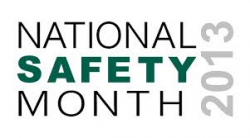The Consumer Product Safety Commission along with the United States Fire Administration (USFA) estimates that more than 15,000 fires break out each year because of lint buildup in dryers and dryer duct systems, taking the lives of almost two dozen people along with millions of dollars in property damage. According to the National Fire Protection Association the leading cause of home clothes dryer fires is failure to clean them.
Every six months you should disconnect, inspect, and clean the exhaust hose. You can do this yourself or hire a professional. If the exhaust duct opening outside the house is low to the ground, check it monthly for leaves, birds’ nests and other debris. During winter months make sure it is not covered by snow. And, never vent the exhaust to an attic or a crawl space.
Here are more easy tips from the NFPA to keep your dryer working properly and to prevent a fire:
- Have your dryer installed and serviced by a professional. Gas dryers should be inspected by a professional to make sure that the gas line and connection are intact and free of leaks.
- Make sure the right plug and outlet are used and that the machine is connected properly. Hire a licensed appliance professional to clean the interior of the dryer chassis and inspect the rollers, belt, motor and heating system every year.
- Turn the dryer off if you leave home or when you go to bed.
- Follow the manufacturers operating instructions and don’t overload your dryer.
- When drying your clothing, always use a lint filter and clean it out after every load. Remove lint that has collected around the drum.
- Keep the area around your dryer clear of things that can burn, like boxes, cleaning supplies and clothing.
- Clothes that have come in contact with flammable substances, like gasoline, paint thinner, or similar solvents should be laid outside to dry, then can be washed and dried as usual.
Make these tips part of your cleaning routine to prevent a dryer fire in your home. Prevent the situation in this video from happening to you.
We also recommend you review NFPAs Dryer Safety Fact Sheet for more information on dryer fire prevention.
– S.O.


